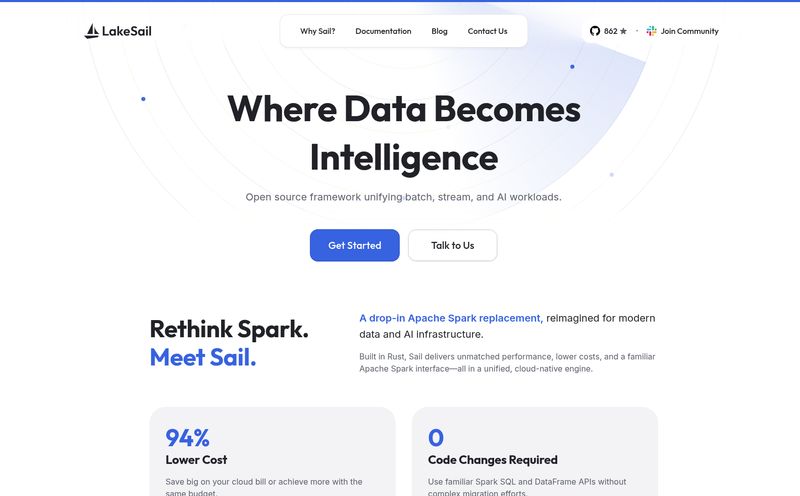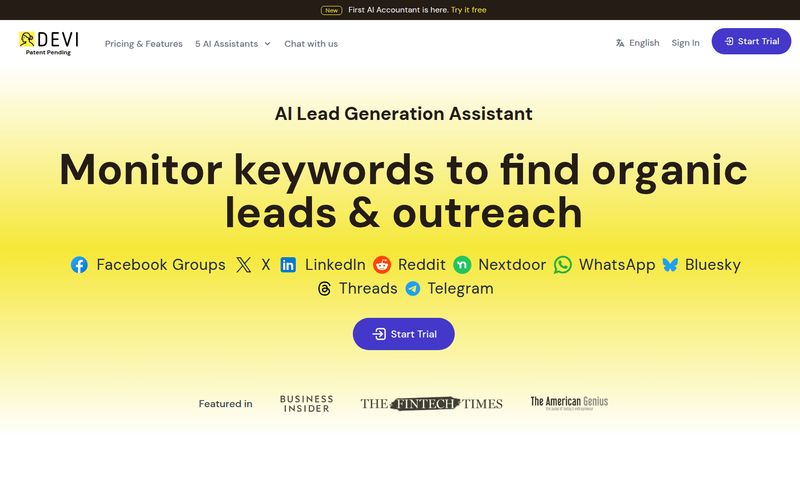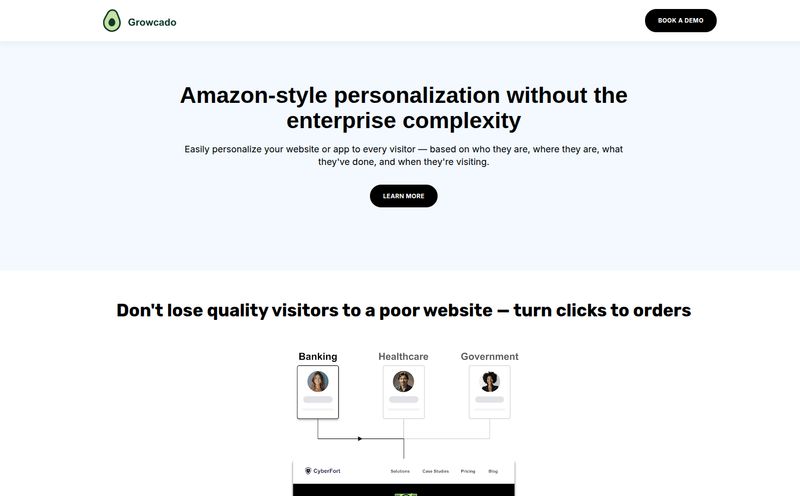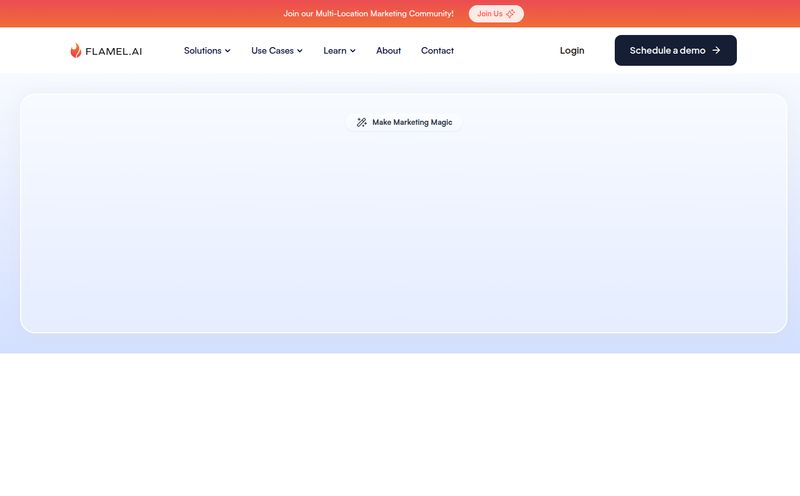For years, we’ve all been chasing the holy grail of marketing: true, 1-to-1 personalization at scale. We dream of delivering that perfect message, to the right person, at the exact right moment. But the reality? It’s often a clunky, frustrating mess of siloed data, disconnected tools, and campaigns that feel about as personal as a 'Dear Valued Customer' email.
Enter the Customer Data Platform, or CDP. It was supposed to be the answer. The one platform to rule them all, unifying our customer data into a single, glorious view. And for a while, it was a huge step up. But as our tech stacks got more complex, these monolithic CDPs started to feel… restrictive. A bit like trying to build a custom race car with a pre-assembled sedan chassis.
This is where a new breed of platform, the composable CDP, is making waves. And one of the biggest names in this space is Lytics. I've been keeping an eye on them for a while, so I figured it was time to take a proper look under the hood.
So, What is a Composable CDP, Anyway?
Before we get into Lytics specifically, let's clear this up. If a traditional CDP is like an all-inclusive resort—you get the room, the food, the activities, all bundled together whether you use them or not—a composable CDP is like building your own vacation itinerary with Airbnb, Turo, and a bunch of local tour guides. You pick and choose the best-of-breed components and plug them into your existing data warehouse (like Snowflake, BigQuery, or Redshift), which acts as the foundation.
It’s a more flexible, developer-friendly approach that gives you control. You're not buying a black box; you're assembling a custom solution from powerful, interconnected parts. Lytics is one of the premier providers of these 'parts'.
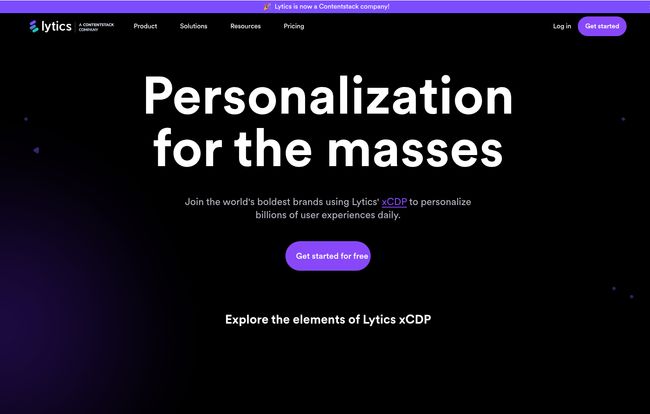
Visit Lytics
A Peek Inside the Lytics Toolbox
Lytics positions itself as the intelligence layer that sits on top of your data infrastructure. It's not trying to be your database; it's there to make your database smarter and more actionable for marketing. Based on their site and industry buzz, a few things really stand out.
The AI-Powered Brain for Decisioning
At its heart, Lytics has a powerful personalization and decisioning engine. This isn't just about segmenting audiences based on past behavior. It’s about using AI to predict future actions, determine the next best experience for a user in real-time, and orchestrate that experience across your channels. Think of it as the conductor of your marketing orchestra, telling the website banner when to play its solo and the email campaign when to come in with the strings, all based on the audience's real-time feedback.
A Two-Way Data Superhighway with Reverse ETL
Okay, “Reverse ETL” sounds like some seriously nerdy jargon, I know. But it’s a huge deal. For years, we’ve focused on ETL (Extract, Transform, Load) to get data into our data warehouses. But getting useful, processed insights back out and into the hands of our marketing tools (like our ESP, ad platforms, or CRM) was a massive headache. Reverse ETL flips that script. Lytics makes it easy to take the rich, combined profiles and scores from your warehouse and sync them to the tools your teams actually use every day. This closes the loop and makes your data infinitely more valuable.
Plays Well with Others: A Universe of Integrations
A composable platform is useless if it doesn't connect to your stuff. Lytics clearly gets this. Their homepage flaunts a dizzying array of logos, from CMS platforms like WordPress and Drupal to the entire Google and Salesforce ecosystems, social platforms, and more. This is critical. It means you can weave Lytics into your existing martech stack rather than ripping and replacing everything. It's designed to be the connective tissue, not a whole new skeleton.
The Good, The Bad, and The Opaque Pricing
No tool is perfect, and from my years in this industry, I’ve learned to be skeptical of anyone who claims to be. Here's my honest take on Lytics.
The advantages are pretty clear. The flexibility is a massive win for enterprises with unique needs and a solid data team. You’re not locked into a rigid system. The real-time processing and AI decisioning are genuinely powerful, moving you from reactive to predictive personalization. And its focus on privacy and compliance is a non-negotiable in the age of GDPR and CCPA. I also have to give them props for their developer-first resources, with SDKs and APIs that show they respect the technical teams who will be implementing this stuff.
However, it's not all sunshine and roses. The biggest hurdle is that Lytics is not a beginner's tool. The very nature of a composable CDP means it requires a certain level of technical expertise and, crucially, a mature data infrastructure to begin with. You can't just 'turn on' Lytics and expect magic if your data is a disorganized mess living in a dozen different spreadsheets. You need a data warehouse and the talent to manage it.
And then there's the elephant in the room: the price. Like most enterprise-grade software, Lytics doesn't list its pricing publicly. You have to 'Contact Sales' to get a quote. I get why they do it—pricing is likely complex and based on usage, data volume, and features—but it’s always a bit of a frustration. It immediately signals that this is a premium product, and if you have to ask, you might not be the target audience.
As a funny aside, when I went to their site to grab a screenshot for this post, I was greeted by a big fat SSL certificate error. Hey, it happens to the best of us! A little reminder that even the biggest tech platforms are run by humans and can have a hiccup now and then. It was fixed quickly, but it gave me a little chuckle.
So, Who Should Actually Consider Lytics?
After digging in, it's pretty obvious who Lytics is for. This is a tool built for mid-to-large-scale enterprises that are serious about taking their personalization efforts to the next level.
Think about the brands they feature: KFC, Live Nation, Atlassian. These are companies with millions of customers, complex digital ecosystems, and dedicated data science and engineering teams. They've likely outgrown a simpler, off-the-shelf CDP and need the power and flexibility of a composable architecture.
If you're a small business or a startup just starting to collect customer data, Lytics is probably overkill. You’d be better served by a more straightforward, all-in-one solution. But if you're an established company with a data warehouse and you're feeling constrained by your current tools, Lytics could be the key to building a truly intelligent and responsive marketing machine.
Frequently Asked Questions About Lytics
What exactly is Lytics?
Lytics is a composable Customer Data Platform (CDP). It provides a suite of tools, including a personalization engine and data activation features, that connect to your company's data warehouse to help you deliver personalized experiences to your customers.
Is Lytics a traditional CDP?
No, it's a 'composable' CDP. This means instead of being one giant, self-contained platform, it's a set of flexible components (like Lego blocks) that you integrate with your existing data warehouse and marketing tools.
How much does Lytics cost?
Lytics doesn't list its pricing publicly. It’s an enterprise solution, so pricing is customized based on your company's needs, data volume, and the specific features you require. You have to contact their sales team for a quote.
Is Lytics difficult to implement?
It can be. Because it's a composable platform that connects to your own data warehouse, it requires technical expertise. It's not a simple plug-and-play tool and is best suited for companies with in-house data and engineering teams.
Is Lytics GDPR compliant?
Yes, the platform is built with privacy in mind and offers tools and architecture that support GDPR and other data privacy regulations. Their composable nature can actually give you more granular control over your data governance.
What kinds of companies use Lytics?
Lytics is primarily used by large, enterprise-level companies that have complex data needs and want to execute sophisticated, real-time personalization at scale. Their clients include major brands like Nestlé Purina and Carhartt.
Final Thoughts
Lytics is an impressive piece of technology. It represents the clear direction the high-end CDP market is heading: away from rigid, all-in-one boxes and toward flexible, powerful, and developer-friendly composable solutions. It’s a serious tool for serious marketers at serious companies.
It’s not a magic bullet, and it’s certainly not for everyone. It demands a strong data foundation and the right team to wield it. But for those ready to make that investment, Lytics offers a pathway to the kind of intelligent, real-time personalization that most of us in the marketing world have been dreaming about for years.
Reference and Sources
- The official Lytics website for product information and features.
- Cloudflare's explanation of an SSL Error 526, for the curious.
